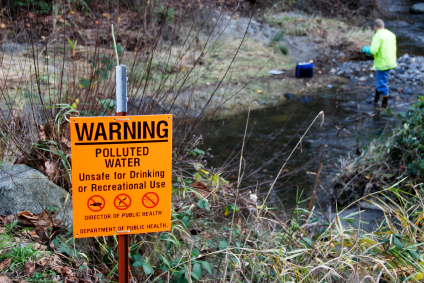Fingers crossed. BP’s oil leak has apparently stopped shy of 200 million gallons spewed into the Gulf of Mexico and a few million more burned off into plumes of toxic smoke. Many have dubbed it the worst environmental disaster in American history. In my view, it’s not even close, but shares a great deal in common with those that are on the “top ten worst” list – – and offers lessons we can profit from.
#10. Chevron Oil Refinery, El Segundo, CA. Decades of leaking pipes and tanks dumped some 252 million gallons of oil and chemicals into aquifers beneath the refinery. To supply Los Angeles with clean water, fossil fuels were burned to generate vast amounts of electricity to pump water hundreds of miles across the state, adding to air pollution, asthma, global warming, and the state debt.
#9. Pacific Salmon. Before WWII, the salmon industry along the west coast of the US employed tens of thousands and provided sustainable protein for millions at ten cents a pound, the “poor man’s steak”. Because of water diversions and habitat destruction, the catch is less than 5% of those historic numbers today, decimating species of all kinds that depend on salmon runs and destroying livelihoods of fishers and Native American tribes that had lived on the fishery for centuries.
#8. The Great Pacific Garbage Patch. Plastic debris, mostly from US shores, floats in a great circle of currents north of Hawaii that is larger than the state of Texas. Ten years ago, samples showed that bits of plastic outnumbered plankton by six to one. Today it is over ten to one. Fish, birds, and marine mammals mistake plastic for food and die in the thousands every month. Disposable lighters and plastic bottle caps are among the most ubiquitous culprits.
#7. The Oil Pipes of Esmeraldas, Ecuador. A dozen years ago, two major pipelines broke, sending oil and gas cascading down streets and into rivers. A spark set off an inferno, which devoured cars and homes. People were burned alive; frantic parents put their children in wooden canoes and pushed them into the Esmeraldas River and then watched in horror as fire engulfed the river and the children. Locals now say petroleum is the “excrement of the devil.” The majority of the oil produced in Ecuador is exported to refineries in Los Angeles and San Francisco.
#6. The Destruction of the Mississippi and Colorado Rivers. Western states suck up so much water from the Colorado River that the 22,000 cubic feet per second that once flowed to the towns and farmers in the southwestern US and Mexico, not to mention the fisheries in the Gulf of Baja, is now almost zero. As for the Mississippi, it still flows, but is so fouled with runoff from pesticides, fertilizer, sewage, and oil from our streets that it has created a 7,000 square mile dead zone in the Gulf of Mexico – – overlapping much of BP’s new pollution – – where waste uses up the oxygen in the sea and almost nothing recognizable survives.
#5. Decimation of the American Bison. Once numbering tens of millions, the bison were slaughtered in the 1800s and the wild herd today numbers barely 15,000.
#4. The Great Dustbowl. Caused by drought and years of extensive farming without soil conservation to prevent erosion, the wind-driven clouds of dust in the 1930s caused death and dislocation of many humans and animals across the center of America for decades.
#3. Ocean Acidification. Although not solely an American phenomenon, the US depends heavily on its ocean resources and, with 5% of the global population but 25% of its greenhouse gas production, is the prime cause of the changing chemistry of the oceans. These changes are dissolving the shells of clams, shrimp, lobster and causing other impacts to fisheries globally that dwarf the problems caused by BP’s oil.
#2. Emptying the Groundwater. So much more water has been taken from underground aquifers in California that the ground has subsided as much as seventy feet. Similar basins in the middle of the country have been so over-drafted that Hopi Indians, who rely on springs fed by these aquifers, report that their water has dried up for the first time in their 10,000 years of recorded history.
#1. Air pollution. 100% of the air we breathe in the US contains human-made toxins, such as BTEX compounds, fine particles, and other carcinogens, causing 100,000 premature deaths every year and over six million hospital visits for asthma and other respiratory diseases.
All of these disasters have common characteristics with the BP spill in the Gulf. They were caused by a desire to quickly convert natural resources to cash, spending the principle of future generations, not merely the interest. They all resulted in the loss of sustainable jobs, businesses, and worker productivity. And they were all preventable.
If we learn nothing from the BP economic tragedy – – and, like those examples that overshadow it, it is far more an economic disaster than an environmental one – – we should learn that the quarterly earnings report and the daily stock price have never been ways to measure a healthy economy. If the BP debacle inspires us to measure our progress in new, sustainable ways, it will change the way we treat our people and natural resources and therefore be the last such disaster of this kind.


